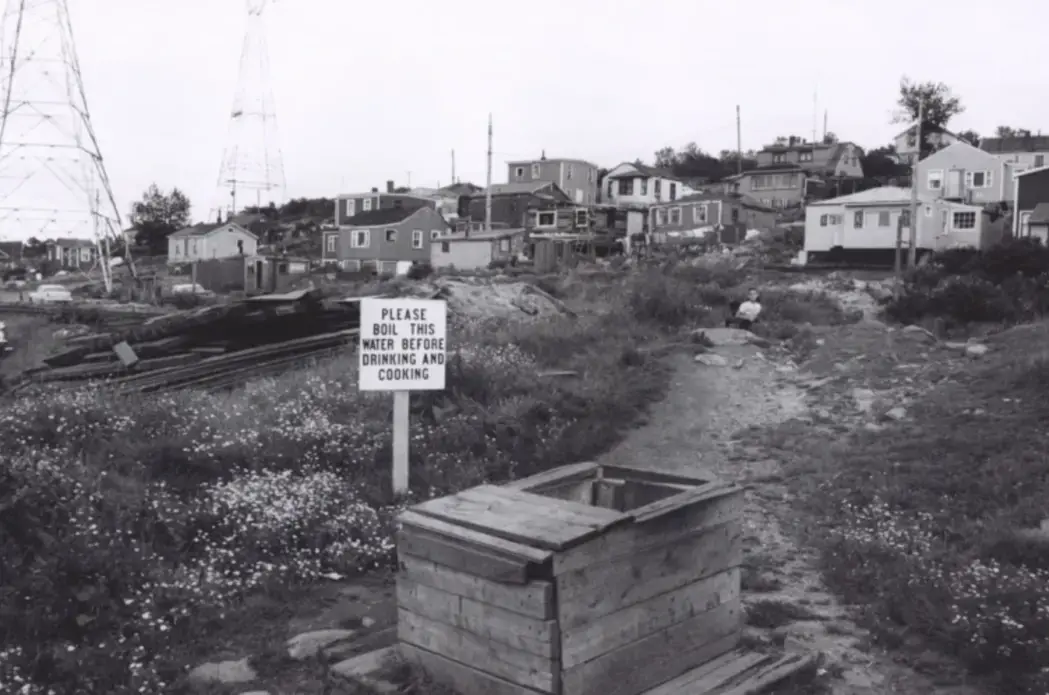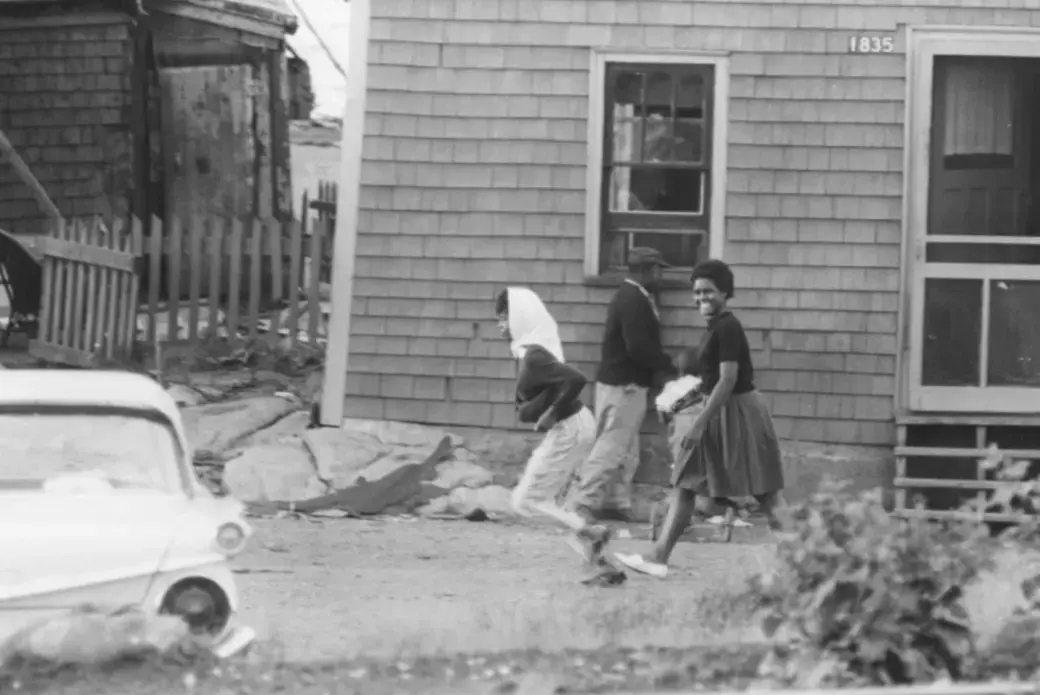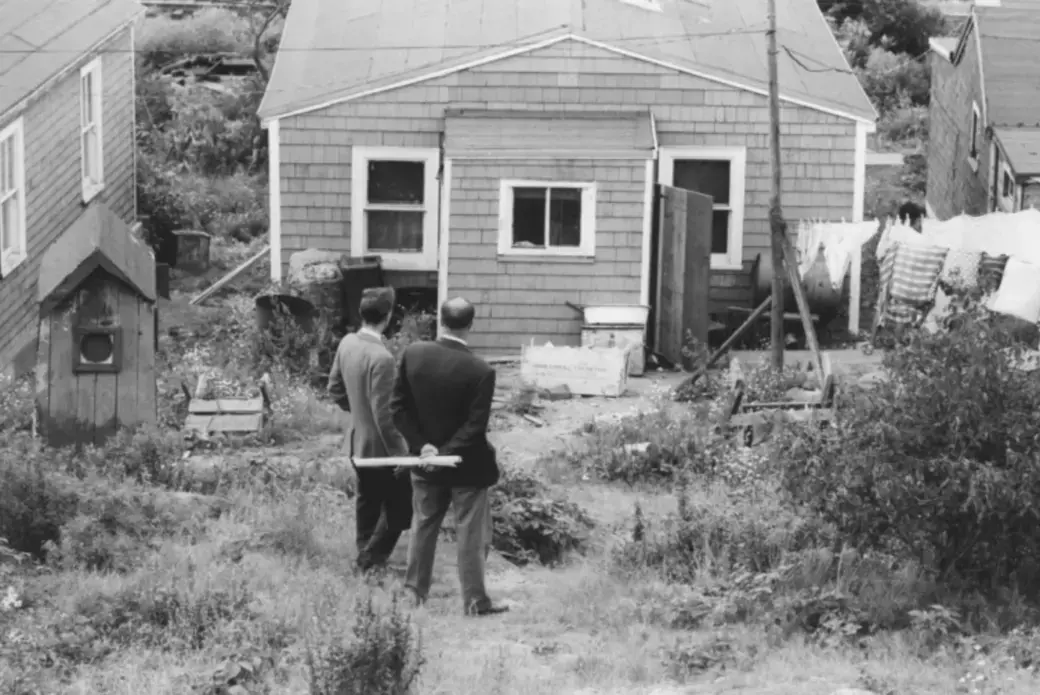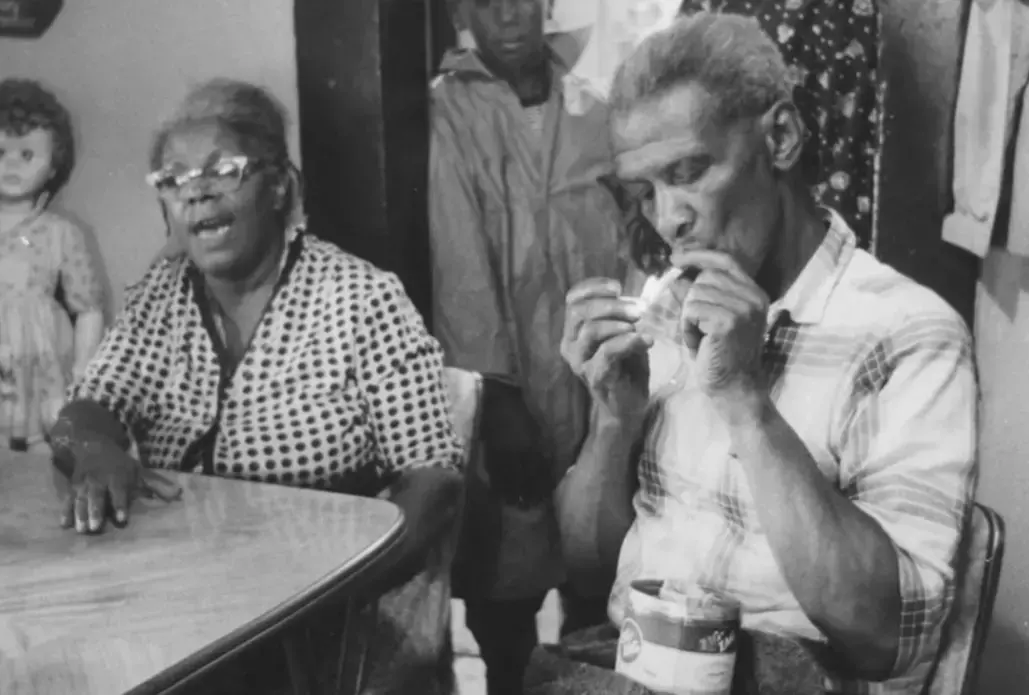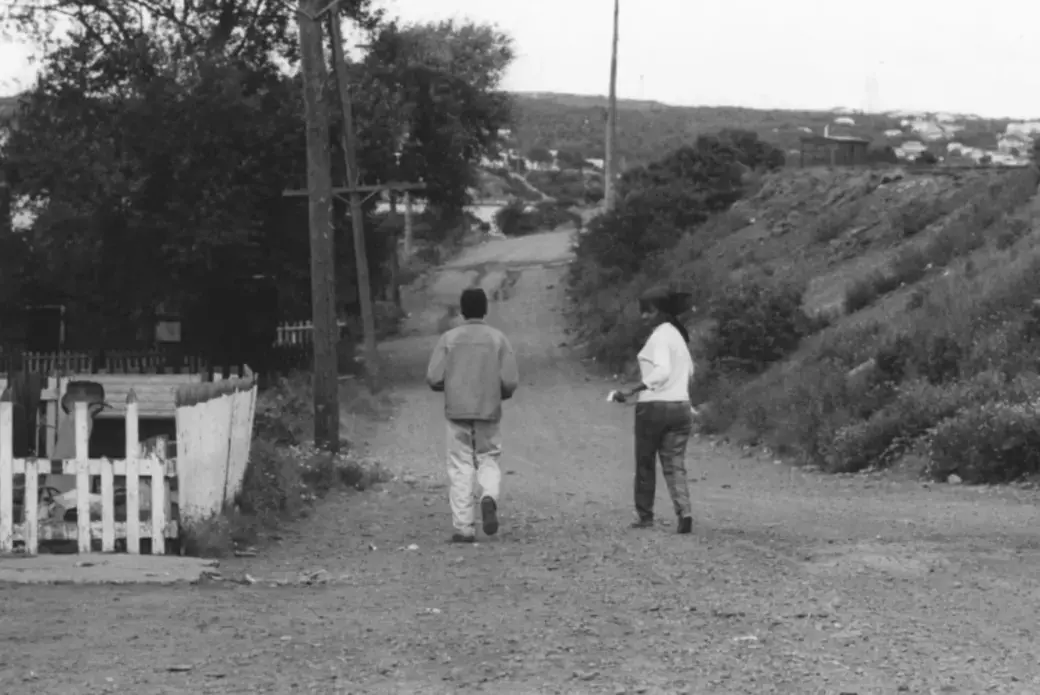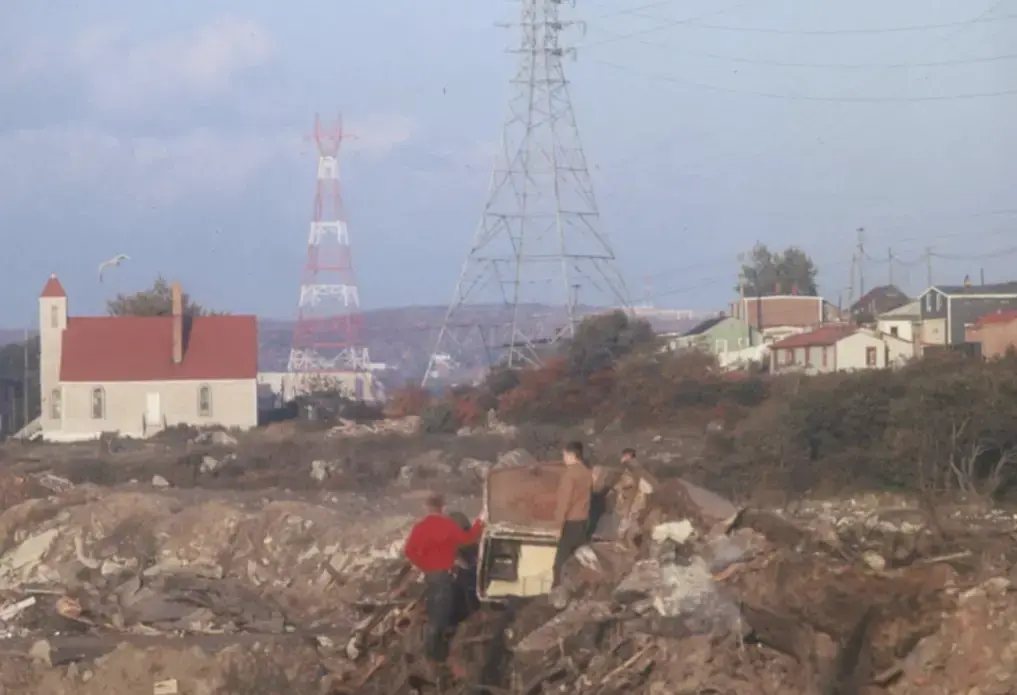To view the videos that accompany this article, click here.
When industrial warning sirens blare through Chemical Valley, Arnold Norman Yellowman hears the neighbourhood dogs howling in this small Indigenous community in southern Ontario, Canada. “They actually sing with the sirens,” he says.
Yellowman, 38, has developed a deep - and profoundly undesired - connection with the pollution surrounding his family in Aamjiwnaang First Nation. When trucks rumble along the road at night, the vibrations resonate throughout the home he shares with his partner and their three young children. When he steps out onto his sunny back porch, he can sense the chemicals in the wind.
As a nonprofit journalism organization, we depend on your support to fund coverage of Indigenous issues and communities. Donate any amount today to become a Pulitzer Center Champion and receive exclusive benefits!
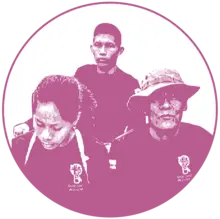
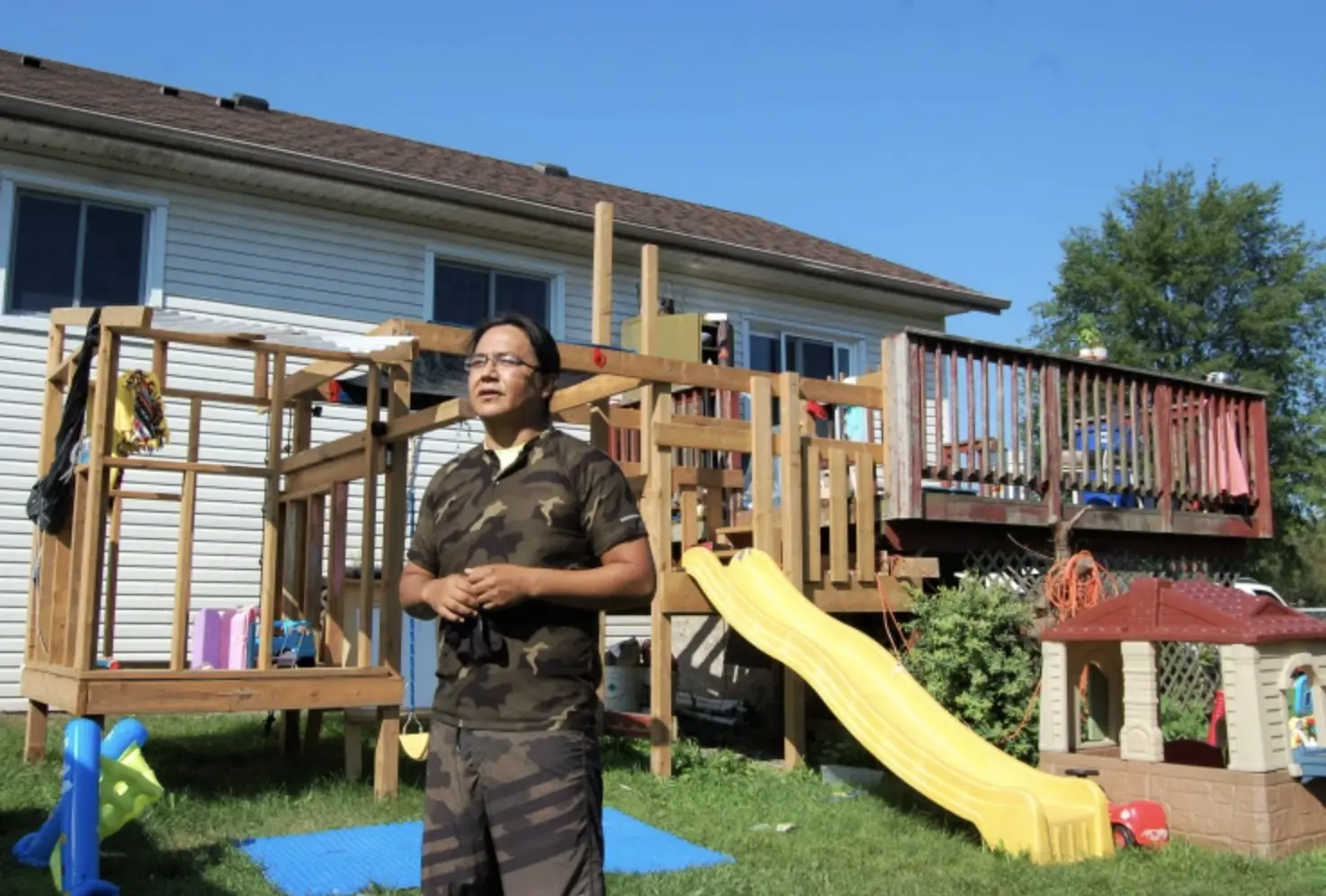
“That’s the north wind. It comes from Esso or Imperial Oil,” Yellowman tells Al Jazeera, tracing his finger across the sky. “If the wind blows from this direction, it’s Suncor - used to be Dow. And if the wind blows over this way, it’s Shell, ethanol, Dupont. If it blows from the south, it’s Nova Chemicals.”
Yellowman, who has lived in Aamjiwnaang for close to three decades, worries acutely about the health effects of growing up in one of Canada’s most heavily industrialised areas.
Chemical Valley is centered around Sarnia, Ontario, a city of about 74,000 people at the southern tip of Lake Huron, just across the border from the US state of Michigan. Aamjiwnaang, home to about 900 people living on the reserve, is a short drive from the city centre past rows of towering oil storage tanks, gas flares spitting flames into the sky, and other fenced-in infrastructure. Speakers are affixed atop tall wooden poles throughout the community, ready to blare warning sirens in an emergency.
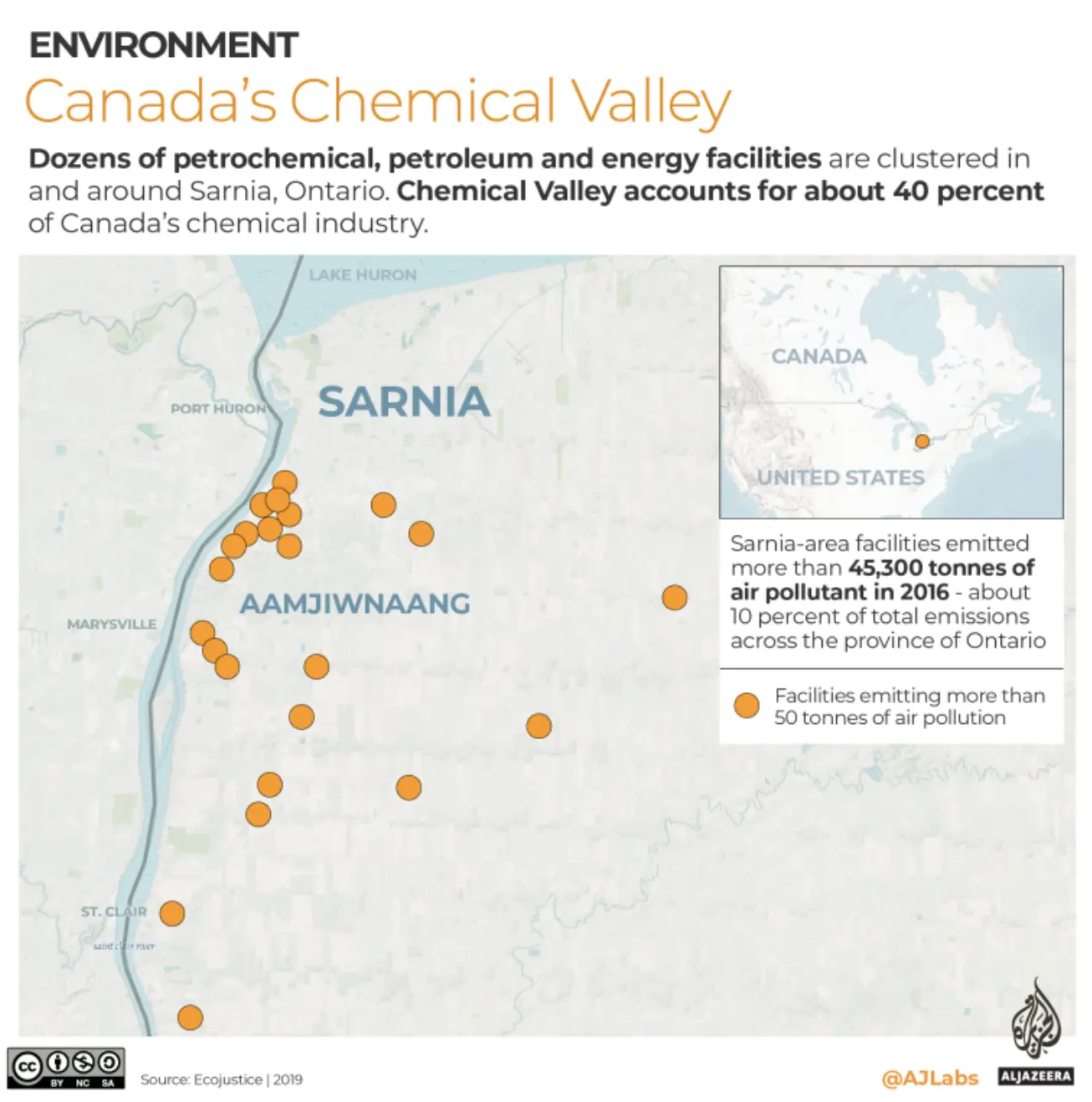
In 2016, more than three dozen petroleum refineries, petrochemical plants and energy facilities operated within a 25km (15.5-mile) radius of the First Nation, according to a recent report by environmental group Ecojustice. That figure included 23 facilities that emitted more than 50 tonnes of air pollutant per year. In total, Sarnia-area facilities emitted more than 45,300 tonnes of air pollutant that year - about 10 percent of total emissions across the province of Ontario. Chemical Valley accounts for about 40 percent of Canada’s chemical industry.
“Aamjiwnaang is quite infamous worldwide in that it is surrounded completely by industries and pollution,” says Niladri Basu, a professor at McGill University in Montreal and Canada Research Chair in Environmental Health Sciences. “It’s no surprise that the community feels like it’s being contaminated, because all they smell and hear and see is the pollution.”
Yellowman recalls stories of miscarriages and stillbirths in his community; of dialysis and chemotherapy; of overdose and suicide. “I think about my children often ... We have to worry about so many different factors,” he says, “about even allowing them to go outside in their yard.” As a child himself in the 1990s, he recalled playing in a “foggy mist” that had drifted across the highway.
“I didn’t know it was the coolant back then, but it just comes across the highway and you just go and play - and there’s a lot of stories like that,” he adds.
'Sacrifice zone'
Chemical Valley is among Canada’s most notorious examples of environmental racism, a concept that refers to the disproportionate siting of hazardous projects and polluting industries among populations of colour and Indigenous communities.
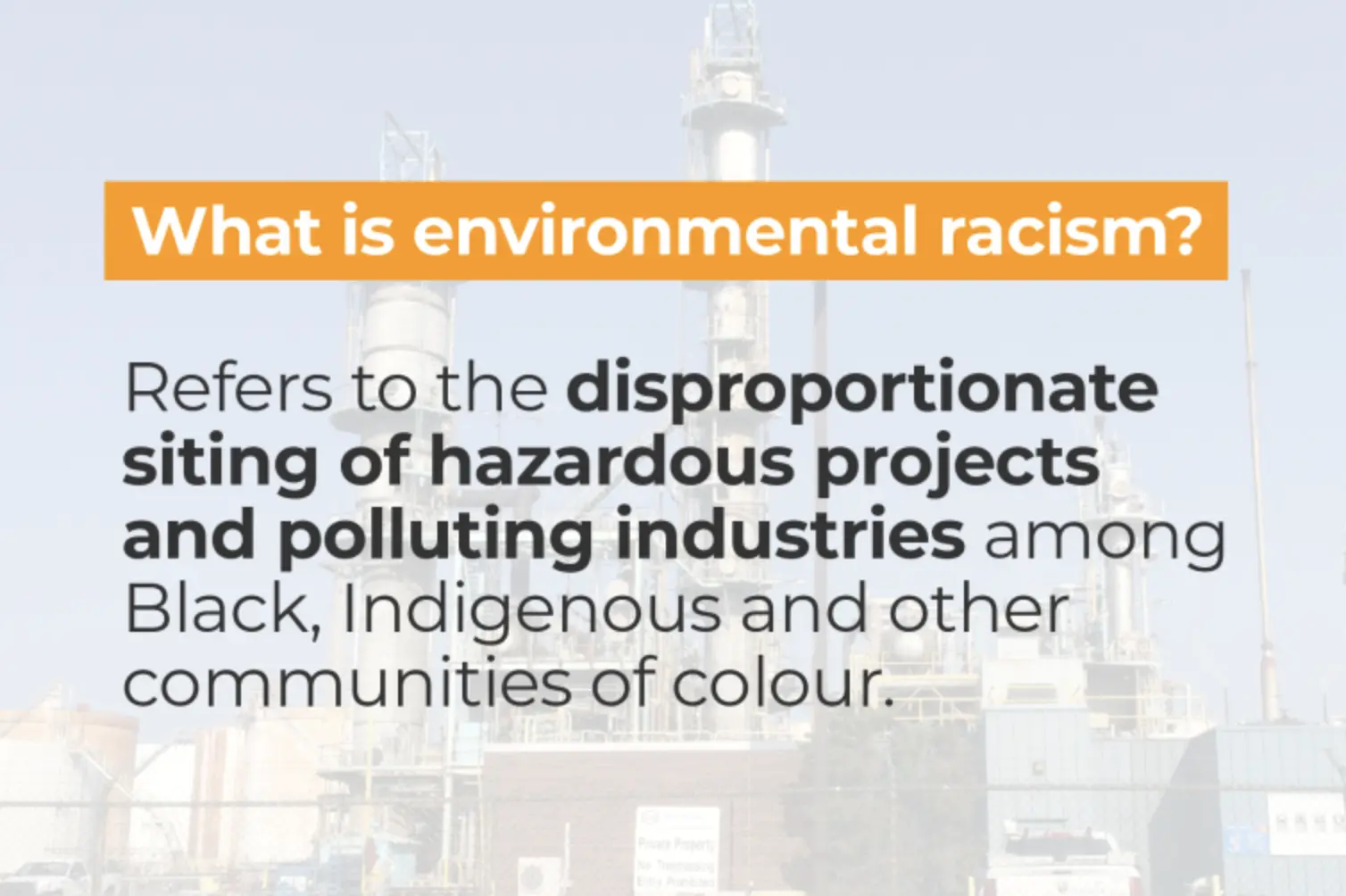
From mercury poisoning in Grassy Narrows First Nation, to the building of major oil and gas pipelines on unceded, Indigenous lands, to the placement of landfills near historic African-Canadian communities on the east coast, environmental racism has manifested across Canada for decades - even before the term itself was coined.
US civil rights leader Benjamin Chavis is credited with first using the phrase in 1982, and Robert Bullard, distinguished professor of urban planning and environmental policy at Texas Southern University, was instrumental in later defining it. Bullard has pointed to the southern United States, in particular, as a “sacrifice zone” where “environmental decision making and local land-use planning operate at the intersection of science, economics, politics and special interests in a way that places communities of colour at risk”.
Ingrid Waldron, Canada’s preeminent expert on the topic and author of There’s Something In The Water: Environmental Racism in Indigenous & Black Communities, says rural and isolated areas are most affected.
“These are [people] who, through colonialism and other processes, have been situated in those types of communities, and it is a combination of geography ... as well as race and socioeconomic status, that then results in the spatial patterning of industries disproportionately in these communities,” Waldron tells Al Jazeera.
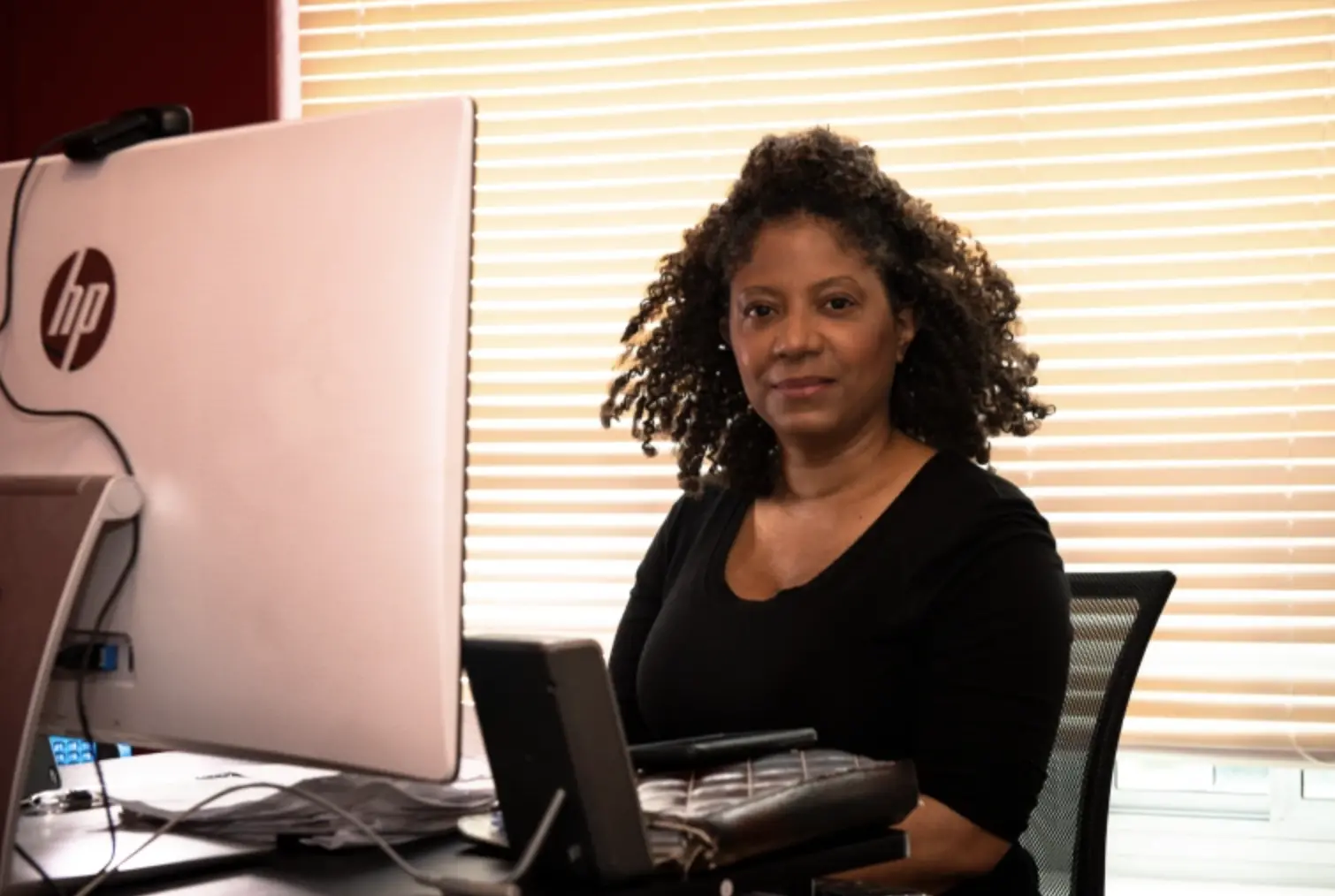
After decades of inaction on the issue, Canada recently started examining its history of environmental racism, as affected residents, environmental groups and legislators have demanded concrete action to address lasting harm. The governing Liberals - in their party platform released ahead of snap September elections that they won, albeit with minority status - pledged to “identify and prioritize the clean-up of contaminated sites in areas where Indigenous, racialized, and low-income Canadians live”, and to probe the link “between race, socio-economic status, and exposure to environmental risk, and develop a strategy to address environmental justice”.
This promise came just months after Bill C-230, a private member’s bill calling for the development of a national strategy to combat environmental racism, passed its second of three readings in the House of Commons. But Prime Minister Justin Trudeau’s decision to call the federal election halted Bill C-230 in its tracks, and the sponsoring MP, Lenore Zann, was ultimately defeated by her Conservative opponent in the Nova Scotia district of Cumberland-Colchester.
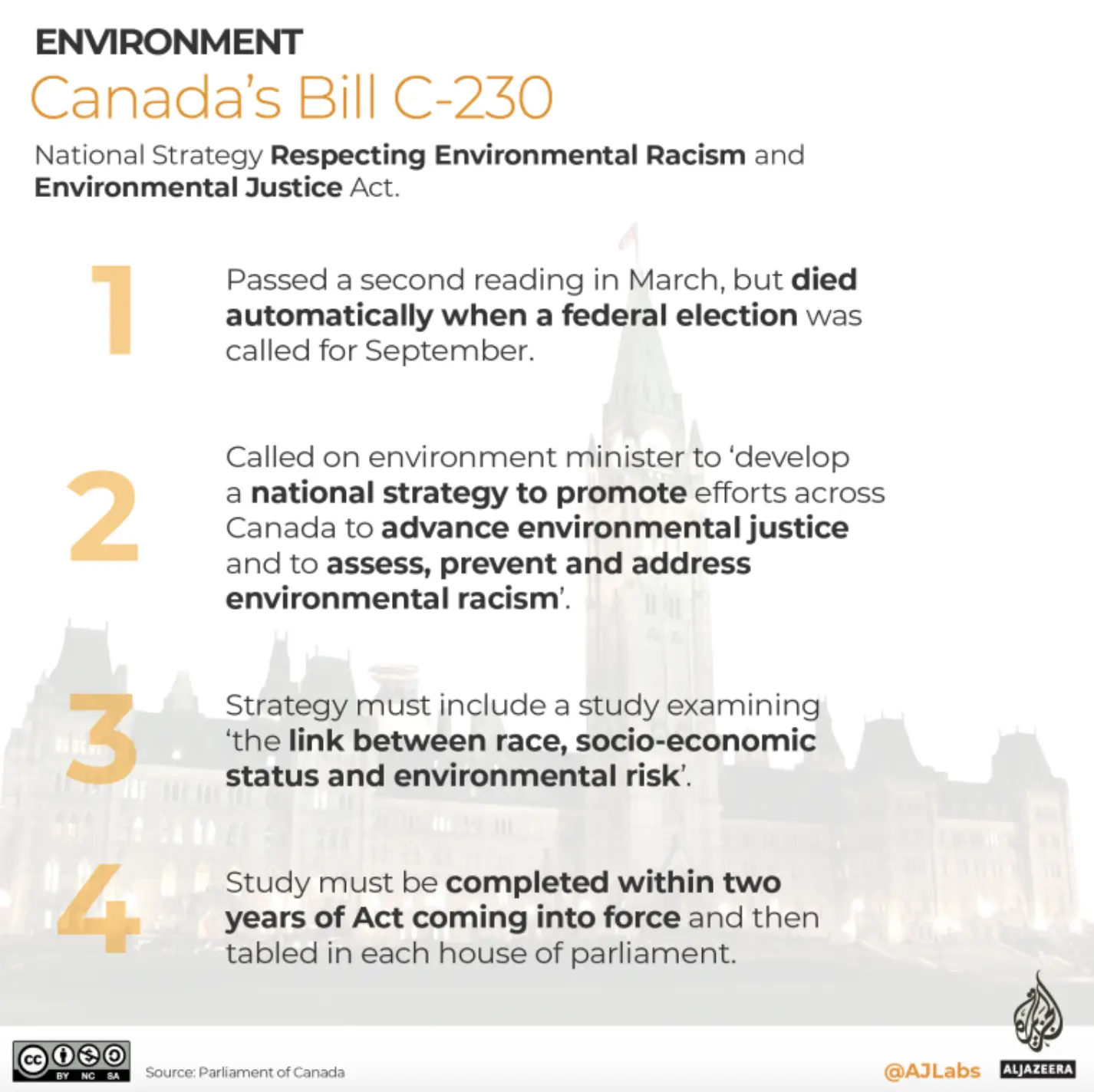
If the Liberals follow through on their election promise by tabling legislation on environmental justice, however, progress on the issue could be much swifter.
In an email, a spokesman for Canada’s federal minister of environment and climate change said Ottawa was committed to advancing legislation “to assist in addressing environmental justice issues” as part of the Canadian Environmental Protection Act. Gabriel Brunet told Al Jazeera that a proposed law - separate from Bill C-230 - would include “biomonitoring surveys”, which could involve probing the effects of pollution on vulnerable populations. The legislation would also facilitate “the making of geographically targeted regulations that could, for example, be used to help address pollution ‘hot spots’ that may disproportionately affect marginalised communities”, Brunet said.
“We plan on tabling this legislation as soon as possible,” he said, without providing an exact date.
Destruction of Africville
The genesis of Canada’s drive to combat environmental racism lies on the country’s eastern seaboard, in the Atlantic province of Nova Scotia, home to some of the earliest Black communities in the country. By the mid-18th Century, according to government figures, there were about 400 enslaved and 17 free Black people living in Halifax, which is today the largest city in the province.
The Black population continued to expand throughout the late 18th and early 19th centuries as large groups of settlers, including people who had been enslaved in the US, began arriving in Nova Scotia. Yet, while many were hoping for a fresh start, racist policies pushed them to the margins of society.
The story of Africville is a case in point: Located in the Halifax area, it developed into a thriving Black community during the 19th century and well into the 20th, even as municipal authorities failed to provide basic amenities such as sewage systems, clean water, garbage disposal and emergency services - all while continuing to collect taxes from residents. At the same time, the city surrounded Africville with facilities unwanted in other communities, including an infectious diseases hospital, a prison, a dump and a slaughterhouse.
Today, the only remaining physical evidence of the community is the Africville Museum, built inside a reconstructed Seaview United Baptist Church - once the beating heart of Africville. Outside the museum, a trailer is painted in bold colours with the face of long-time activist Eddie Carvery and the words “All Power to the People”. Inside, exhibits tell the story of a community abandoned by the city that was meant to serve it.
Former resident Beatrice Wilkins, who is on the board of the Africville Heritage Trust, which manages the museum, remembers how children were always told to “be careful” when going out in the neighbourhood.
Those things were put right into our physical community, and there was nothing we could do about it, because we were nobody - and the city just did whatever they wanted.
Former Africville resident Beatrice Wilkins
“There were certain places you couldn’t go, like we were warned to stay off the dump. We were warned not to go up around the Rockhead Prison, and the infectious diseases hospital ... because you never know what you could pick up,” she tells Al Jazeera. “Those things were put right into our physical community, and there was nothing we could do about it, because we were nobody - and the city just did whatever they wanted.”
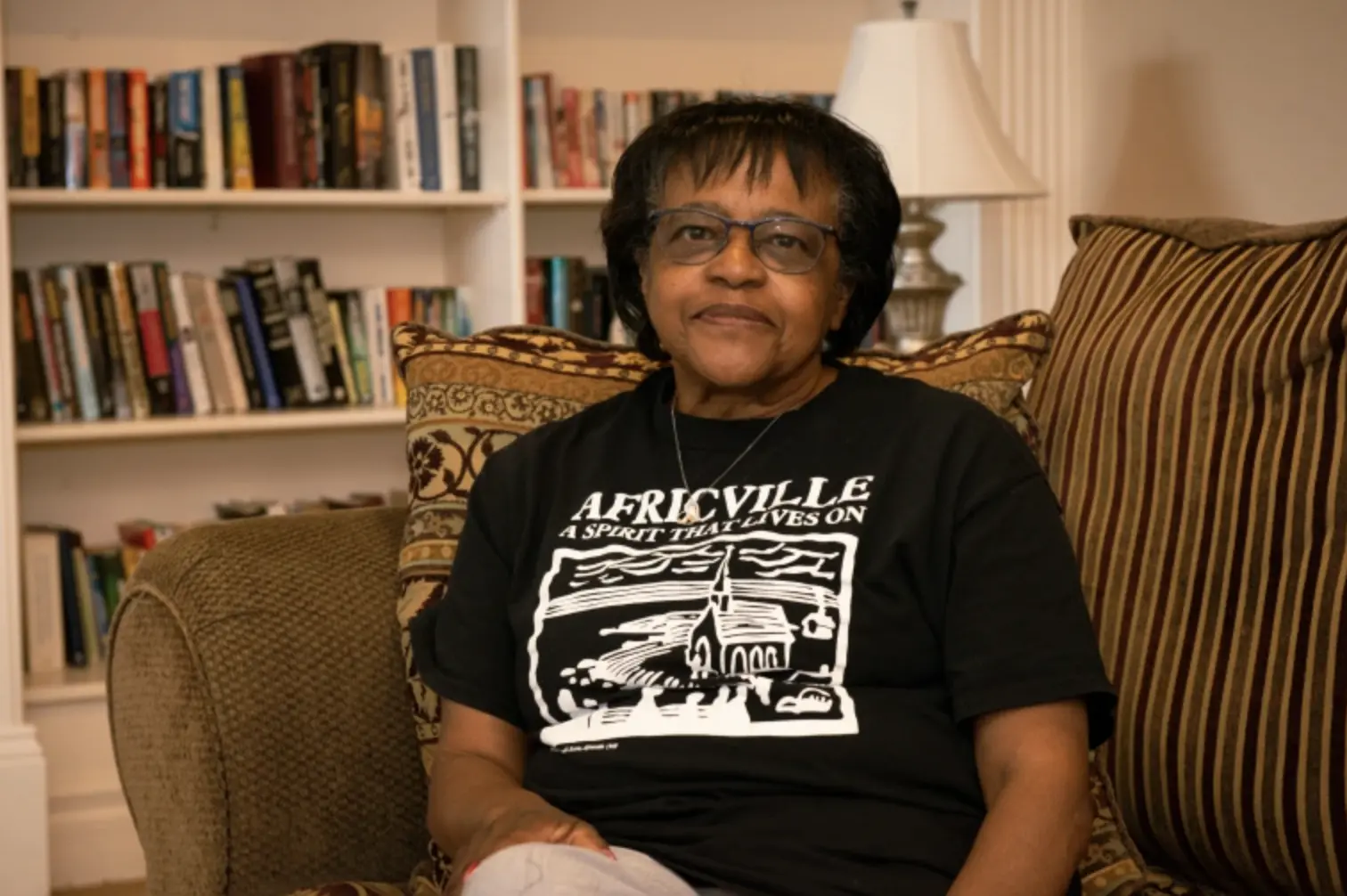
In 1958, Africville was officially designated a “slum”, and in the years that followed, Halifax city council pushed residents out, using “the threat of expropriation to negotiate the purchase of their land”, according to the heritage trust.
Although residents were supposed to be consulted about the relocation plan, more than 80 percent were reportedly never contacted by the committee tasked with carrying it out. Between 1964 and 1970, families were removed from their homes and many were placed in public housing projects, the heritage trust noted in its online retelling of the story of Africville. “Homes were demolished and the church bulldozed in the middle of the night. The means of displacement served as a metaphor for how the community of Africville was regarded: the city moved some of the residents’ belongings in municipal dump trucks.”
Amanda Carvery-Taylor, whose family has a long history in the area and who recently authored a compilation titled A Love Letter to Africville, says this was a devastating blow, displacing and isolating members of the once tight-knit community. While Africville had been poor, under-serviced and encircled by polluting industries, none of these things defined it, she says.
“There’s a feeling that these things were Africville, but they weren’t,” Carvery-Taylor tells Al Jazeera. “They were surrounding Africville, and definitely undesirable, but the community was very happy to be together. That was the main thing, was just them being together, having a safe place that they could live and exist ... There were definitely fine-china Sunday dinners with your gloves on and your hats, and church.
“Everything was stunning in Africville,” she adds. “It was absolutely beautiful, so it was just like they were surrounded by bad things. But when they were razed in the ‘60s, it basically devastated the community. It destroyed, or attempted to destroy us.”
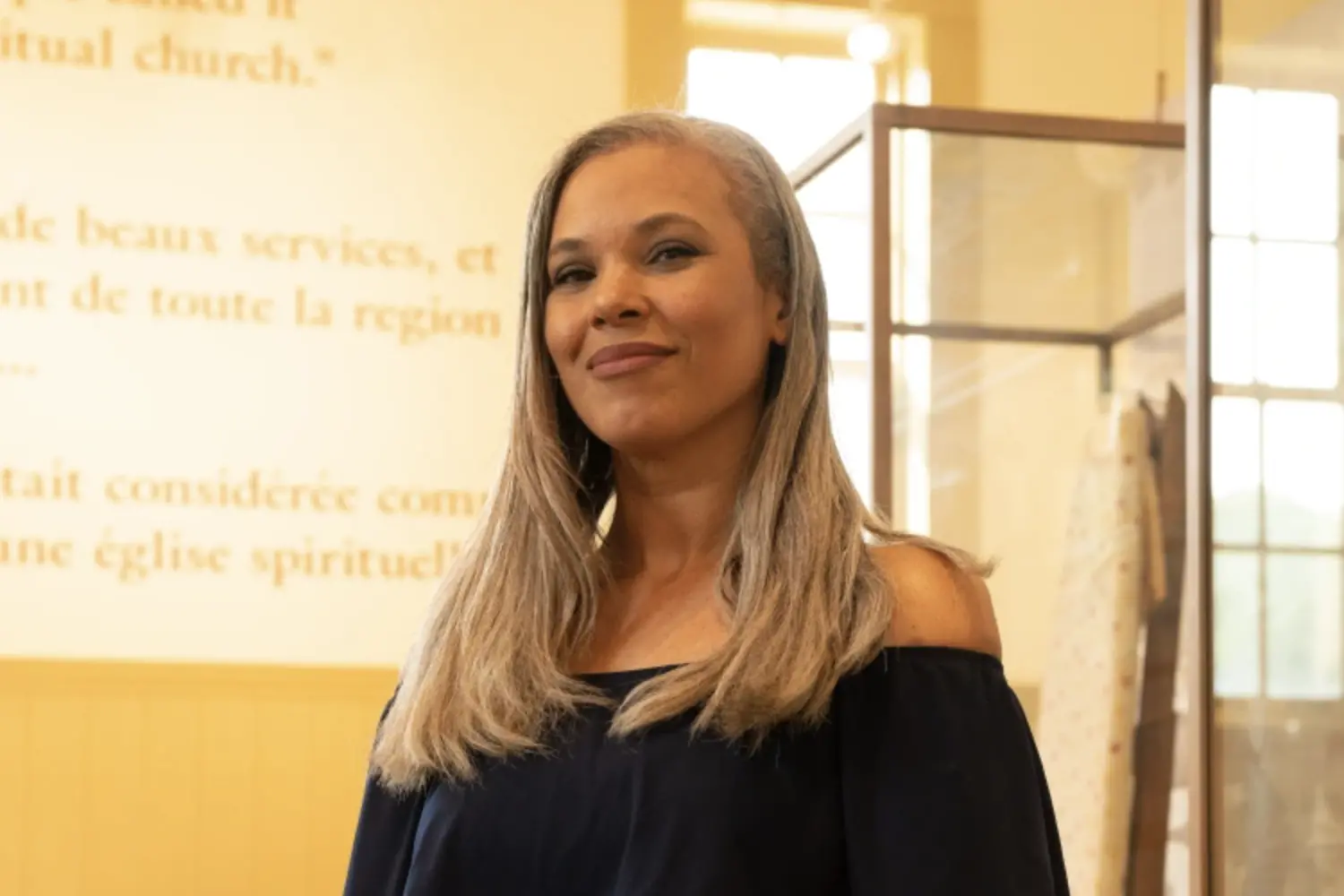
In the decades that followed, Africville residents pushed the city for restitution, culminating in 2010 with a public apology from the mayor of Halifax and $3m in funding to rebuild the Seaview church and provide other support for the Black community. Debate persists as to whether any of this was enough, with some former Africville residents and their descendants calling for reparations to this day.
Current Halifax Mayor Mike Savage says the city is continuing to explore various ways of supporting former Africville residents, but “whether that means traditional reparations”, he says he does not know. In April, the city council approved a motion to embark on a “visioning process” for Africville, part of which would examine what has happened since the 2010 apology and compensation package, and what more needs to be done. Savage told Al Jazeera this would be a long-term endeavour.
“If we are going to be serious about first of all understanding history, and secondly making the future better than the past, as a city we have to do things differently,” he says. “We can’t just assume the way we’ve always done things, the way we’ve engaged, has been sufficient.”
'You never stop grieving'
Alongside Africville, other problematic sites in Nova Scotia include the Boat Harbour treatment facility, which saw millions of litres of effluent piped daily into a Mikmaq harbour until it was shut down last year; the African Nova Scotian community of Lincolnville, where a landfill site has raised serious concerns about water quality; and a 1940s-era dump for residential, industrial and medical waste in the Black community of southern Shelburne.
Waldron, whose book on environmental racism was the basis of a 2019 documentary co-directed and co-produced by actor Elliot Page, has spent years documenting the phenomenon in the province. She serves as executive director of the Environmental Noxiousness, Racial Inequities and Community Health (ENRICH) project, which has mapped the proximity of dozens of waste disposal sites and other toxic industries to First Nations and African Nova Scotian communities.
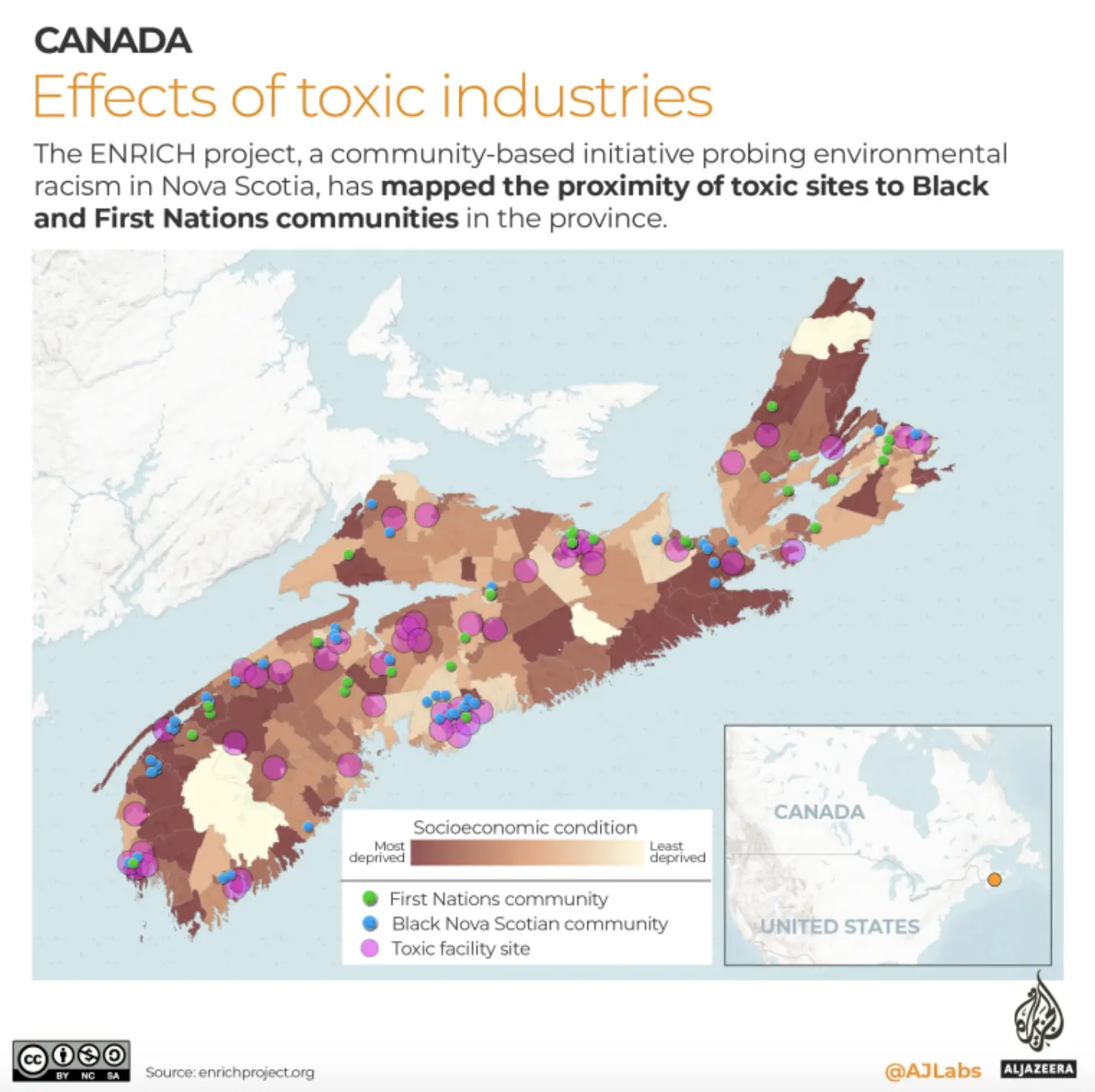
“These are people that are not seen - as people of colour and Indigenous people - we are not seen as worthy of protection in the same way that white people are,” Waldron says.
When that dump was afire, we had to be inside because of the smoke, and the smell, and the ash ... Growing up here that way was not easy.”
Louise Delisle
Louise Delisle, an activist who lives around the corner from the former Shelburne dump, which ceased regular operations in the 1990s and was permanently closed in 2016, recalls being forced as a child to shelter indoors when the garbage was being incinerated. “When that dump was afire, we had to be inside because of the smoke, and the smell, and the ash ... You can imagine, with tonnes and tonnes of garbage burning, what the smell would be like, and the ash from that burning, the wind blowing, the seagulls - thousands of seagulls. Growing up here that way was not easy.”
Delisle remains deeply concerned about the long-term health effects of living so close to the dump. Each time one of her neighbours dies of cancer, she records it in her own personal database, which now has dozens of entries. Delisle lost her brother to stomach cancer, her father to prostate cancer, and her mother to breast cancer and a blood disorder. Several other relatives have been diagnosed with, or died from, various cancers. She believes this is the legacy of Shelburne’s toxic environment.
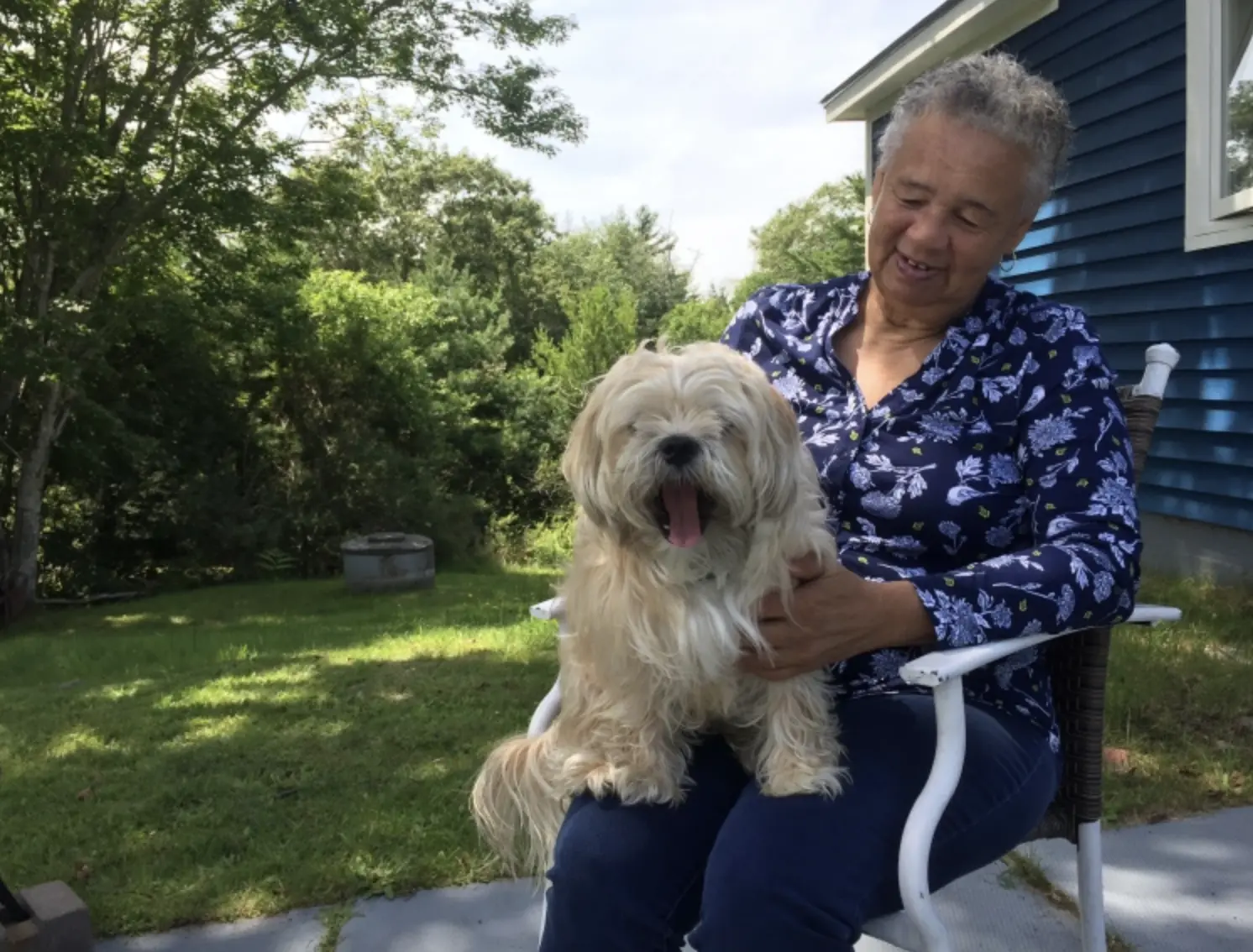
“It really tears you apart inside, because you never stop grieving. You’re in a constant state of grief all the time,” Delisle tells Al Jazeera. “It’s always somebody. We’re losing at least two people a month, and sometimes more than that, to cancer. That’s to this day.”
Past studies in other regions have cited the potential adverse effects of landfills on the environment and human health, with risks ranging from respiratory illnesses to cancer. But it remains difficult to establish a definitive, proven connection. Today, Waldron is part of a team embarking on a new study to determine whether the Shelburne dump - as opposed to other factors, such as socioeconomics and lifestyle - might be responsible for the spate of cancer cases in that community.
“[Across the province], there’s a clear association to me, a strong association between the presence of these industries near these communities and serious health issues,” Waldron says.
Long-term exposures
According to Basu, the McGill University professor, making direct links between proximity to specific chemicals and polluting industries, and negative health effects, is one of the biggest challenges when investigating environmental racism.
“In a case like Aaamjiwnaang, you have hundreds if not thousands of chemical stressors, and you’re not exposed individually but in complex mixtures. So then how do you actually backtrack that chemical and figure out which facility it came from?” he tells Al Jazeera.
Basu was among a group of researchers that measured chemical exposure in Aamjiwnaang about a decade ago at the request of the community. Their study, which involved collecting hair, urine and blood from residents but was limited in scope, found that mothers and children were exposed to several pollutants, including mercury, which the World Health Organization says is “highly toxic to human health”.
“We looked for a number of different chemicals and not surprisingly these were found in all individuals by and large,” says Basu, who described the findings as a “good first start” but acknowledged that more research is needed.
“The big caveat here is that all the chemicals we looked at are not safe at any level, so just finding them in peoples’ bodies should raise some questions about what people are being exposed to and sort of the long-term consequences of chronic exposures to these types of chemicals,” he says.
Another more recent study Basu was involved in, released in 2019, found that Indigenous people globally were among the populations at highest risk of being affected by pollution, with oil and gas exploration, mineral extraction, toxic waste dumping and industrial development among the top sources of exposure.
“A lot of it may go back to just historical issues and ways in which lands and treaties were developed, whereby polluting industries were placed beside the Indigenous communities without their consent or involvement,” he explains.
Warnings about the effects of pollution in Aamjiwnaang have escalated in recent years, with experts calling on Canadian and Ontarian authorities to do more to investigate.
In 2017, the province’s environmental commissioner said Aamjiwnaang residents have been exposed to toxic chemicals such as benzene and sulphur dioxide, and were breathing in “some of the worst air pollution” in the country. “There is strong evidence that the pollution is causing adverse health effects, which neither the federal nor provincial government have properly investigated,” Dianne Saxe wrote in her annual protection report.
A United Nations special rapporteur also recently called on Canada to make improvements “in investigating health impacts, conducting proper monitoring, and enforcing existing standards” in Aamjiwnaang, calling the situation there “profoundly unsettling”.
In a report last year to the UN Human Rights Council, Baskut Tuncak said the presence of polluting industries on three sides of the reserve creates “physiological and mental stress among community members regarding the risk of impending explosions or other disasters, and health impacts from unquestionably poisonous chronic exposures”.
“The environmental injustice is an ongoing tragedy, a legacy of land use planning that would not be allowed today,” he said.
Debate entering the mainstream
Tuncak’s visit bolstered a years-long campaign to pressure the Canadian government to develop a national strategy to combat environmental racism. Such efforts began back in Nova Scotia, where Waldron has been one of the driving forces behind Bill C-230, redrafted from a previous local initiative. In 2015, Waldron worked with Zann, who was then a member of the Nova Scotia legislature, to draft Bill 111, the Environmental Racism Prevention Act, which demanded a provincial strategy to address the issue.
“[The] government tends to not respond to certain communities that have ongoing concerns about environmental racism,” Waldron says. “Those communities are often marginalized because of race, because of gender, because of socioeconomic status, because of geography and where they live ... You can bank on the fact that perhaps they’re not going to have the same type of visibility as white, and more elite, and more upper-class groups, so it’s easy to ignore them.”
Such fears were confirmed after the Nova Scotia bill was defeated in the provincial legislature. At the time, Zann says, “most people had no idea what environmental racism was”. But since then, the debate has gradually started to enter the mainstream.
According to Environment Minister Tim Halman, the province’s long history of environmental racism has “caused great harm and trauma to many communities” - and “we must do better”. While some work has begun, such as the Boat Harbour cleanup, Halman tells Al Jazeera that much more is needed.
To that end, the provincial government recently passed new environmental legislation that Halman says “will guide Nova Scotia forward in a way that is focused on ensuring equity”. The Environmental Goals and Climate Change Reduction Act, which received royal assent on November 5, commits “to create a panel to address environmental racism by the end of 2022 with recommendations for redress coming to the Province by the end of 2023”.
Momentum also has been building at the federal level, where Waldron and Zann reconfigured their proposed legislation as Bill C-230, which went through a first reading in February 2020. When it passed the second of three readings this past March, advocates were hopeful that it was on its way to becoming law. And although the bill automatically died when Trudeau called the September election, Zann remains optimistic that environmental justice will stay on the federal agenda. That could occur either through another MP introducing a private member’s bill similar to C-230, or through a cabinet minister tabling legislation, as outlined in the Liberal Party platform.
“After everything that has been exposed by the [COVID-19] pandemic, where the pandemic has shown the shortfalls and the gaps in society ... I think that we’d be blind if we do not see it, and we would be remiss if we don’t address it now,” Zann tells Al Jazeera.
At the same time, Waldron and Naolo Charles, who co-founded the Canadian Coalition for Environmental and Climate Justice, are looking to expand upon the work of ENRICH by developing a Canada-wide map of environmental racism hotspots. “There’s a lack of data, first of all, because in Canada we typically don’t really collect race-based data ... [and] when you don’t have the data, then it’s really hard for you to actually engage people and tell them, ‘this is the issue’,” Charles tells Al Jazeera.
The coalition sent a letter to Trudeau in October urging the government to make good on its promise to develop a “strategy to address environmental justice”, and to reintroduce and proceed to a third reading on Bill C-230 before the end of the year. “Ensuring that the recent elections do not delay passage of Canada’s first environmental racism bill will allow the important work of examining the link between race, socio-economic status and environmental risk, and developing a national environmental justice strategy to begin,” the letter asserts.
Broader struggle continues
Yet, with a fragile Liberal minority government in power, it remains unclear as to whether, or when, Canada will truly begin to address its history of environmental racism.
In Nova Scotia - which recently made headlines when a white man was appointed as the province’s African Nova Scotian Affairs minister, and where racist graffiti appeared on the streets of Shelburne in August - the broader struggle is far from over.
“You’ve got communities that are in many ways stripped of power,” Waldron says. “… Because of those intersections of race, and low income, and low education, and living in isolated, rural communities - because of those factors, it kind of strips people of the kind of power that is needed in order to be heard.”
The government has an obligation to speak directly to those affected by environmental racism, “and we don’t see that in our communities”, Carvery-Taylor added.
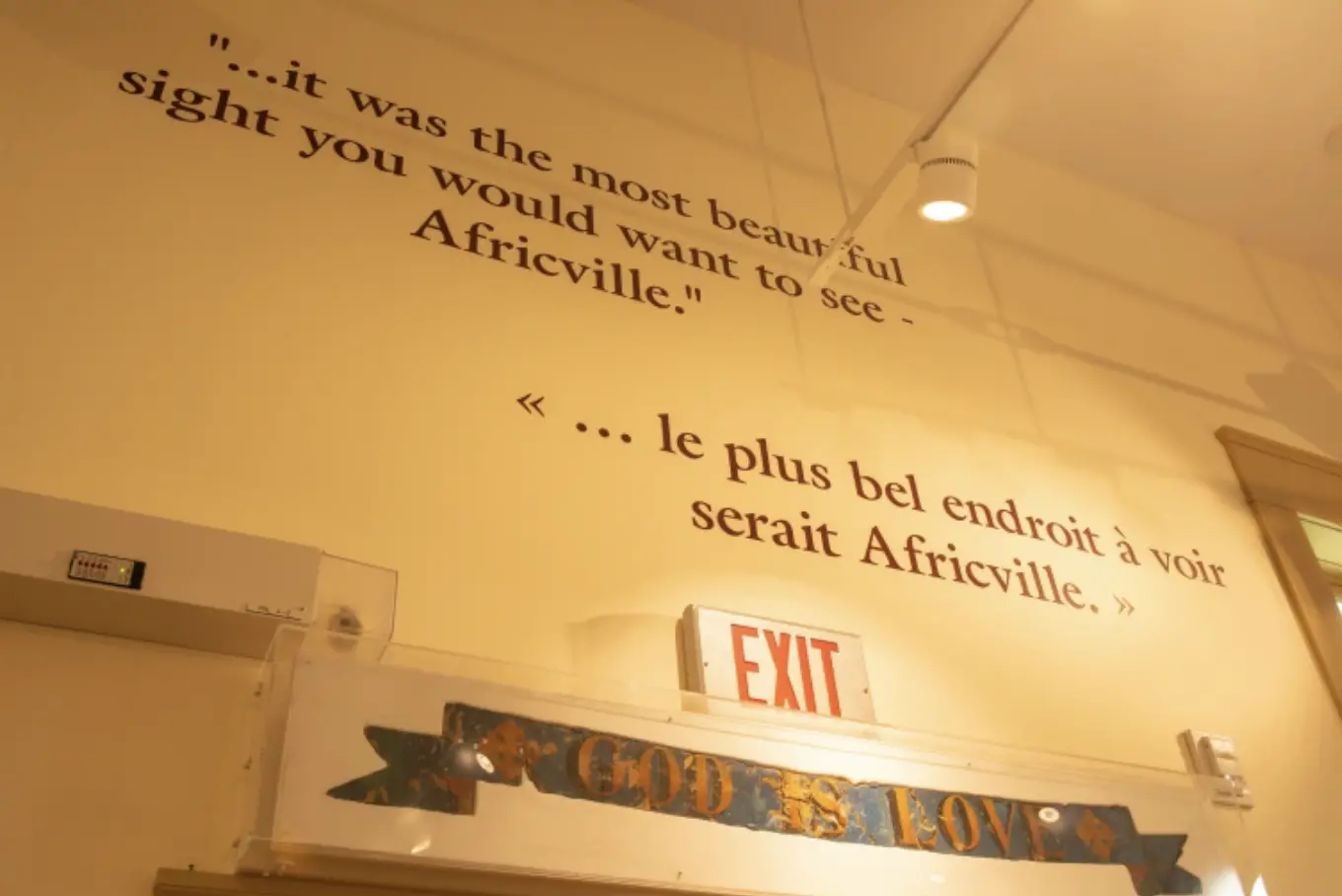
At the same time, she remains determined to separate the deeper story of Africville from the noxious legacy surrounding it - and to ensure people know that “these things that happened, they happened a long time ago, but those people are still alive - they’re still here”.
For Wilkins, who grew up in Africville but now lives in a quiet apartment complex in the Dartmouth area of greater Halifax, a key question lingers, decades after residents were forced to leave their homes: “What could have happened to me if I had grown up in my community?”
“When I look at [the African Nova Scotian communities of] North Preston, East Preston, Cherry Brook - those communities are thriving,” she said. “We could have had the same thing. We could have thrived," Wilkins added. “But we don’t know, not today - because it’s gone.”
'We're going to assert our rights'
Meanwhile, back in Aamjiwnaang, Janelle Nahmabin is determined to make sure her own children and the generations that come after them don’t experience what she and her elders have. She is among several community members leading efforts to better understand how nearby facilities affect residents’ health, in hopes of making lasting changes.
The 34-year-old, who chairs the local environment committee, says Aamjiwnaang begun regular air monitoring around five to seven years ago. Data is being collected by a community advisory panel made up of various stakeholders, including local, provincial, and federal government agencies, members of the public, and companies that operate in the area. But Nahmabin says the data set isn’t strong enough yet - and in some cases, the information arrives after lengthy delays, which makes it more difficult to enforce emissions standards and hold companies accountable.
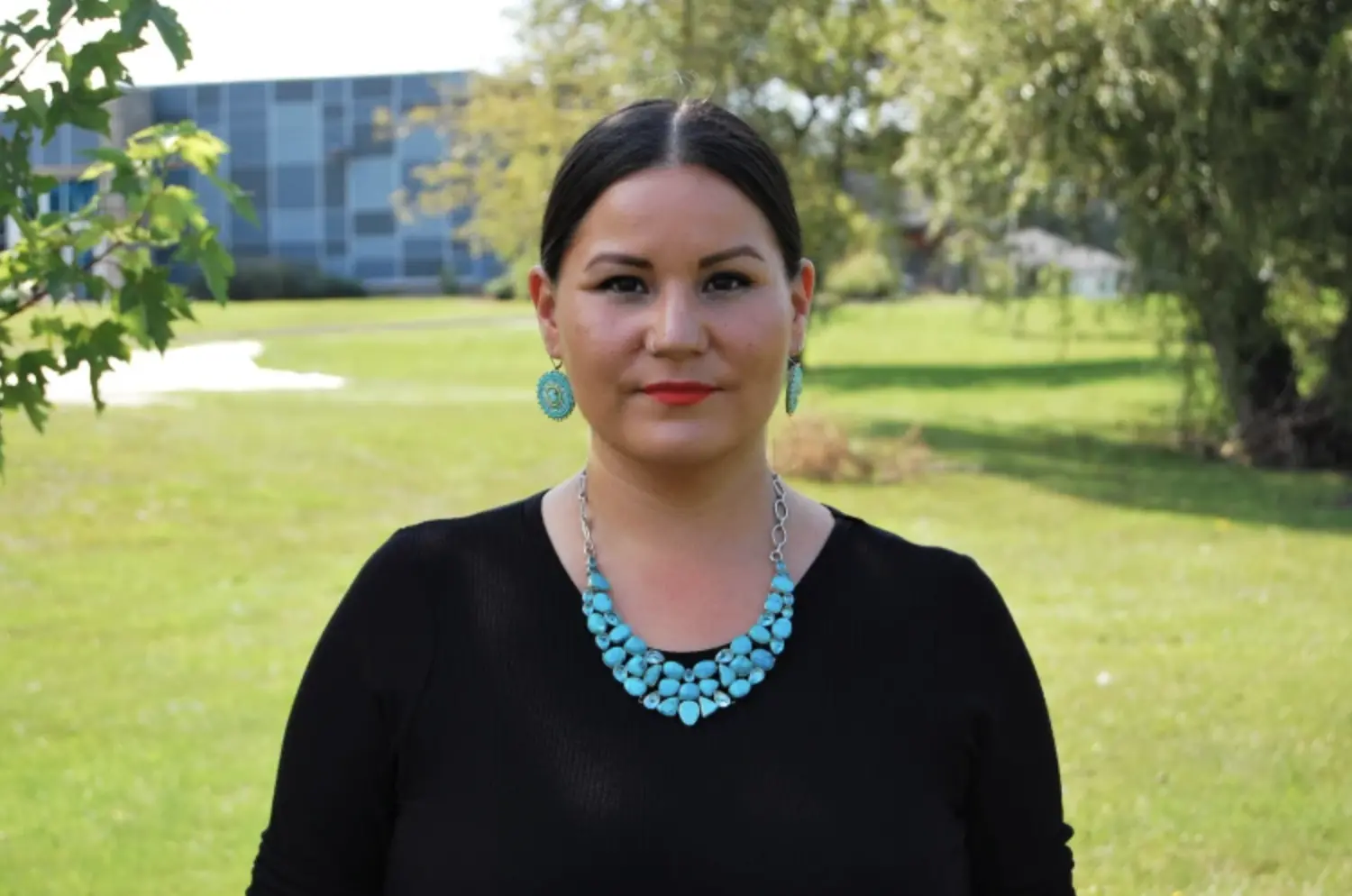
Asthma and other breathing problems, along with rashes, headaches and high cancer rates, are among the most prevalent health issues on the reserve, she says. “As community residents we know that there’s more going on, but we just don’t have the pieces that can put it all together for us,” she tells Al Jazeera, sitting on a bench near a community garden and greenhouse on a hot August day.
In an email, a spokesman for Ontario’s minister of environment, conservation and parks said that since 2018, the province has issued $1.8 million Canadian ($1.42m) in 16 penalties against heavy emitters. The government is also proposing new requirements that aim to reduce emissions from petroleum facilities in southern Ontario by 20 to 30 percent immediately, and by 90 percent by the end of 2026. “This regulation would also enhance monitoring and reporting requirements and authorize new fines so that our government can hold heavy emitters to account,” he said.
The spokesman added that the ministry is working with Aamjiwnaang on environmental health and air monitoring mechanisms, and is committed to sharing data and modeling with the community so that residents can have a say on environmental decisions that affect them.
But Nahmabin says part of the problem is that companies are constantly accommodated, even when they breach emissions limits. “If I was to be out driving and I’m speeding all the time, I’m going to get ticket after ticket after ticket - [and] eventually my licence is going to be taken away. That’s not the same case for local refineries here. They are accommodated,” she says.
Earlier this year, two members of Aamjiwnaang First Nation, Yellowman and fellow environmental activist Vanessa Gray, who are represented by Ecojustice, were granted party status in an Ontario Land Tribunal hearing over penalties levied against Imperial Oil. They are aiming to ensure that the tribunal upholds hundreds of thousands of dollars in fines against the company for releasing excessive amounts of sulphur dioxide into the atmosphere. A hearing is set for April 2022.
If the penalties are ultimately upheld, Yellowman says, “that’s going to have a precedent [for] other companies in the world”.
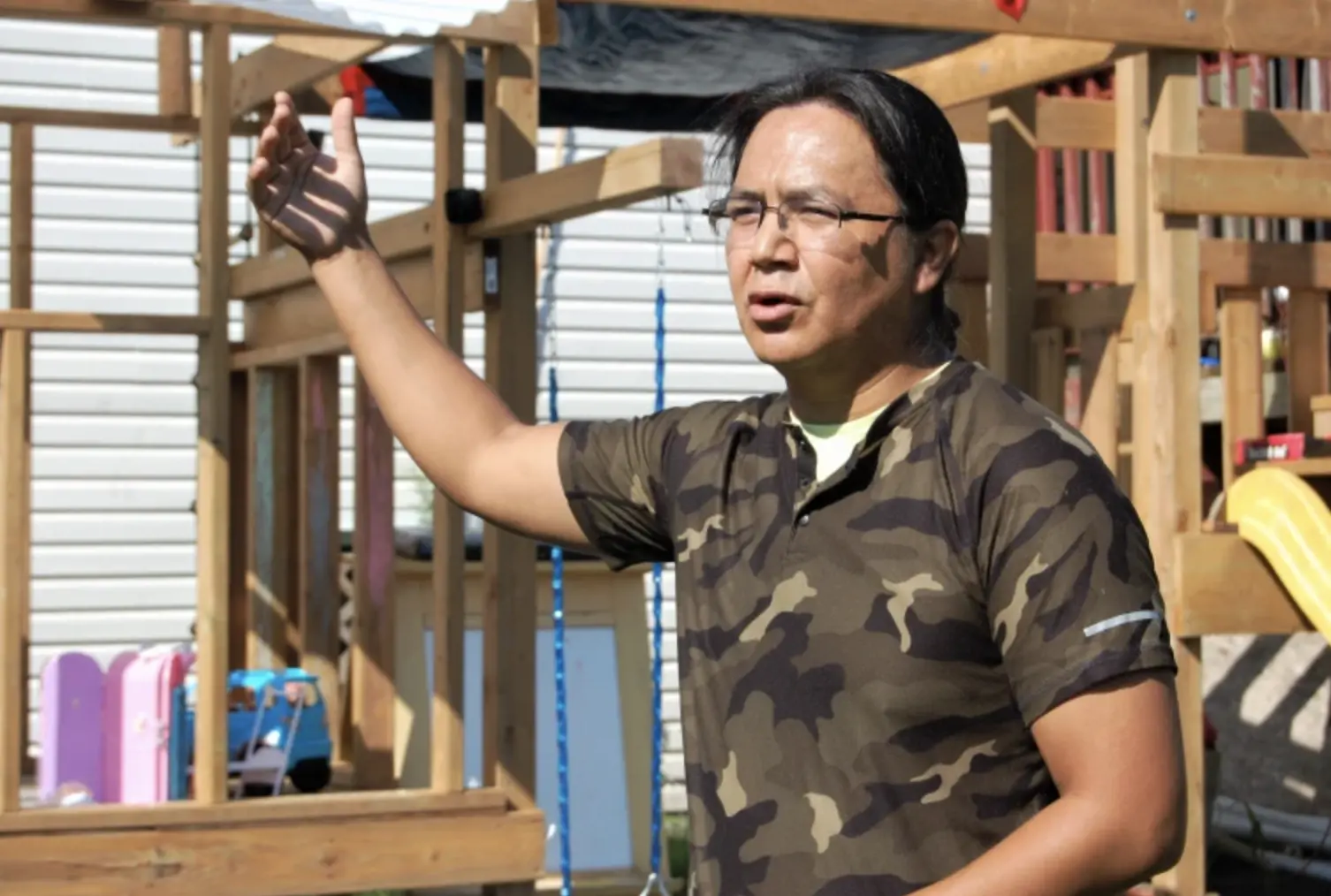
Lisa Schmidt, an Imperial Oil spokesperson, said the Ontario government late last year informed the company of environmental penalties related to a new regulation implemented by the province in July 2019. “During each alleged contravention in 2019, we operated in compliance with the province’s air quality standards for sulphur dioxide. Questions about the process are best directed to the regulator,” Schmidt told Al Jazeera in an email. She added that the company has invested more than $1bn Canadian ($783m) over the past 10 years at sites in Sarnia and Nanticoke, Ontario, including $360m Canadian ($281m) in environmental improvements.
In the meantime, Nahmabin says she has grown increasingly frustrated at seeing her community shoulder the health risks of industries operating in the area. “Quite frankly, we’ve been here for a millennia - forever. For us to have to continuously be the ones accommodating, I’m done with that. I’m done with having to compromise our health, our mental well-being, our safety, for everybody else,” she says.
The pollution Aamjiwnaang residents are exposed to every day is harming their relationship with the land, adds Nahmabin, which in turn “disconnects Indigenous people from their culture, because the land is a part of our identity”. She links the community’s fight to other Indigenous struggles to reclaim land and resources across North America - and despite the challenges, she has vowed to press on.
“We’re going to assert our rights, absolutely. In a time where we were never able to do that for so long, we’re reclaiming our culture, we’re reclaiming our identity and we’re picking up our sacred bundles and remembering who we are, where we come from.”




